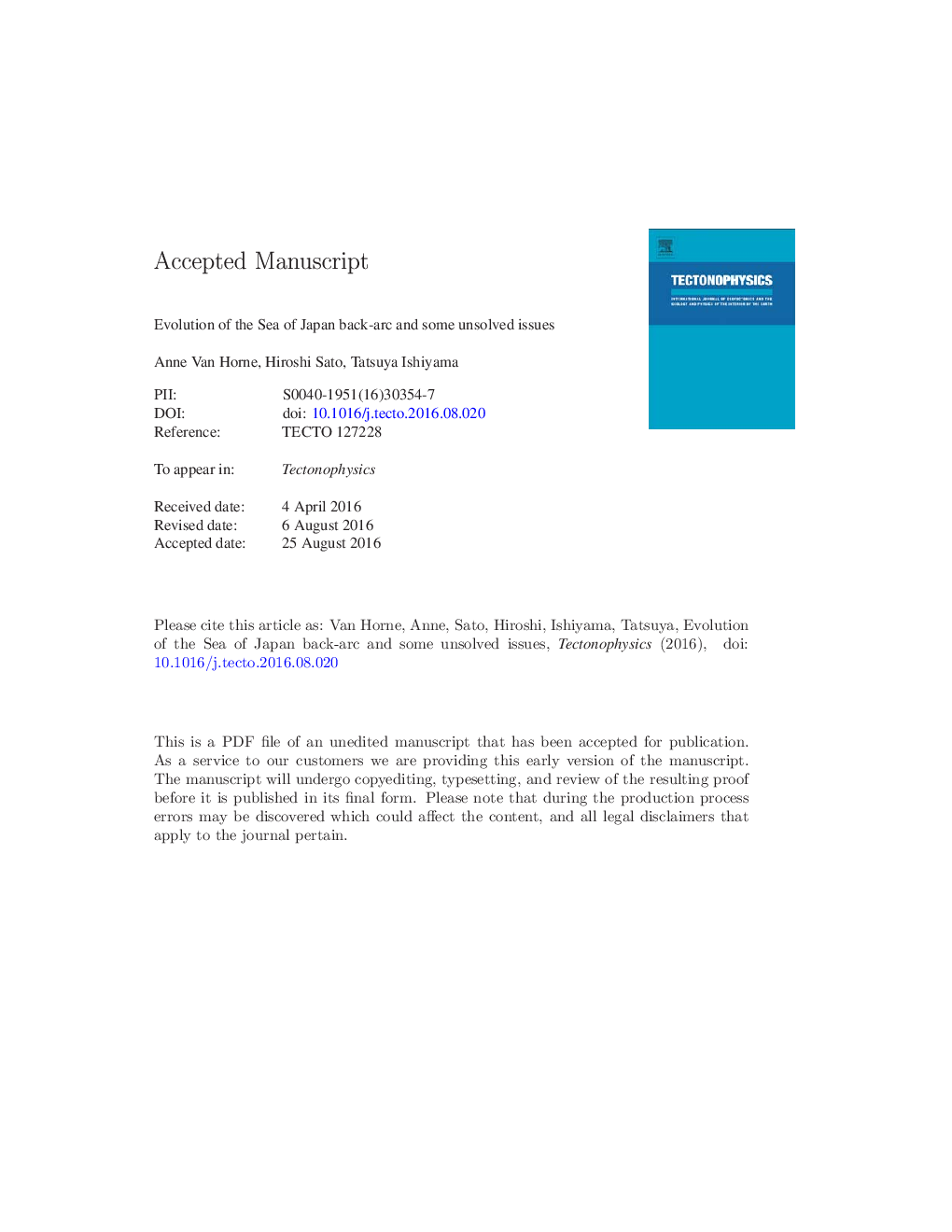| Article ID | Journal | Published Year | Pages | File Type |
|---|---|---|---|---|
| 5781581 | Tectonophysics | 2017 | 52 Pages |
Abstract
The Sea of Japan back-arc system provides an exceptional opportunity to study a virtually intact continent-ocean back-arc system in which recent tectonic inversion has exposed entire sequences of back-arc structure on land. Moreover, Japan's dense seismic/geodetic-monitoring networks, deployed country-wide, as well as moveable pools of ocean bottom seismometers, provide a rich data set through which to investigate deep back-arc structure. Earlier investigations have produced an initial understanding of back-arc opening: timing, structural evolution, temporal/spatial patterns of magmatic activity. Many questions remain, among them, the mechanism of back-arc opening (pull-apart or trench-rollback), the dynamics of interacting plates (location of the Philippine Sea plate with time), the origin of the anomalously thick Japan Sea ocean crust, and possible influences of far-field forces (India-Asia collision). Given existing high-resolution geophysical data sets and extensive on-land exposures of back-arc sequences and structures, the Sea of Japan back-arc is a promising context in which to address both local and more universal questions of how back-arc systems evolve. Here we review the tectonic setting and geological evolution of the Sea of Japan, based our own and others' work, and briefly discuss outstanding questions that invite further investigation.
Keywords
Related Topics
Physical Sciences and Engineering
Earth and Planetary Sciences
Earth-Surface Processes
Authors
Anne Van Horne, Hiroshi Sato, Tatsuya Ishiyama,
